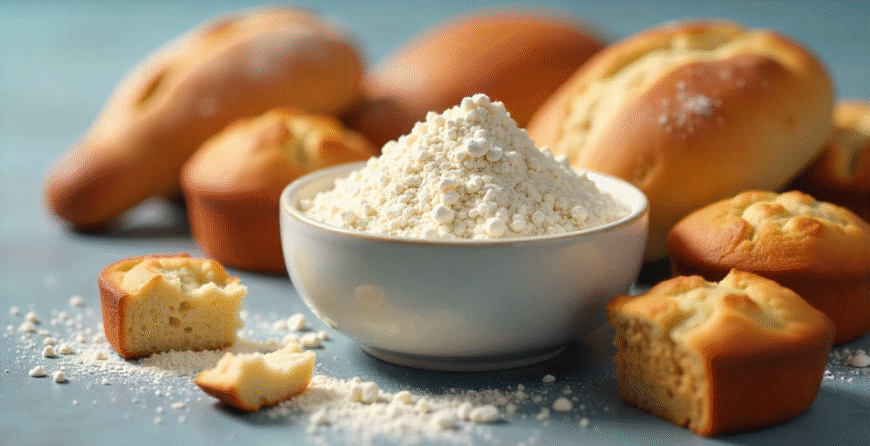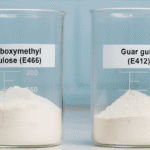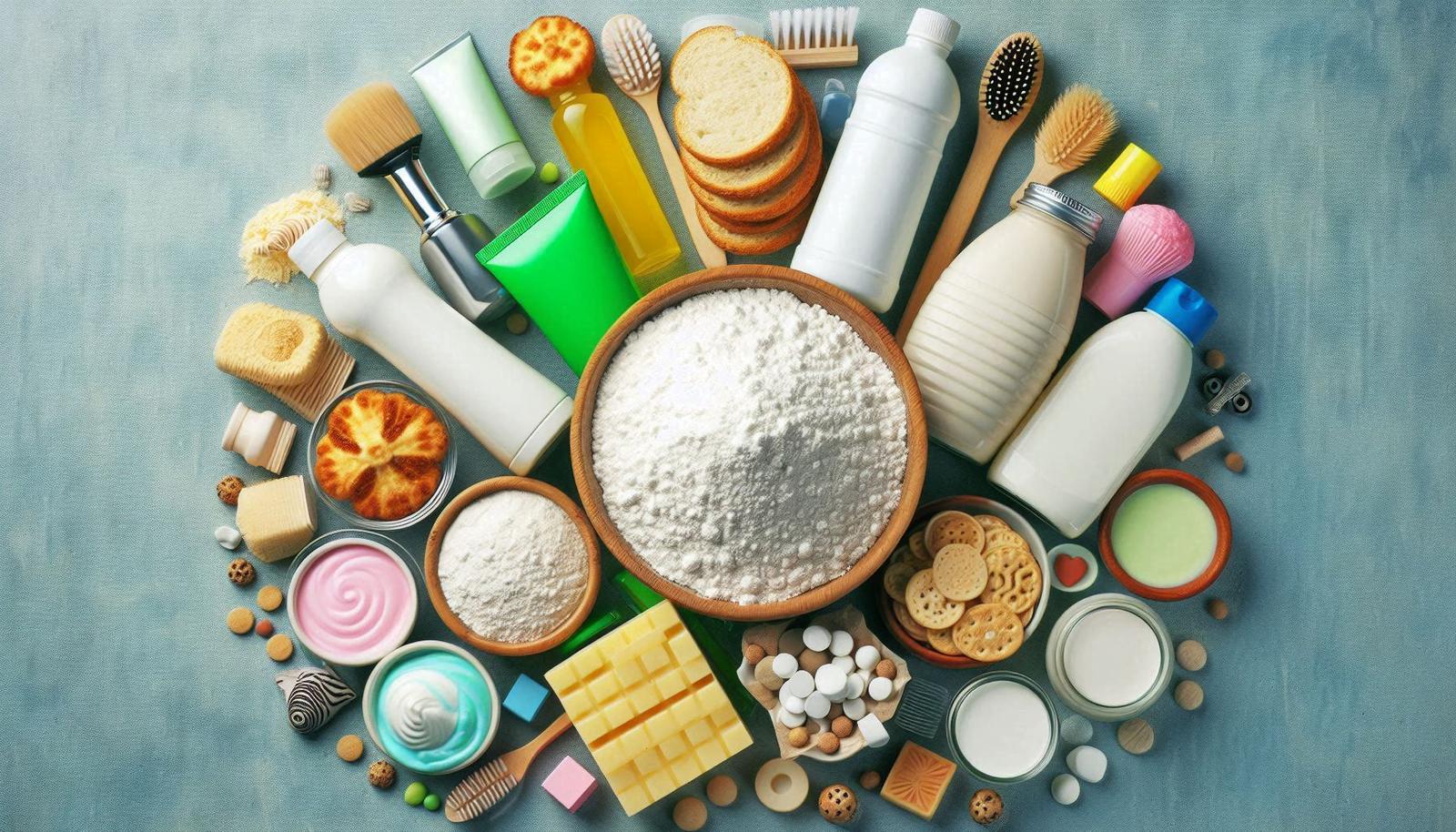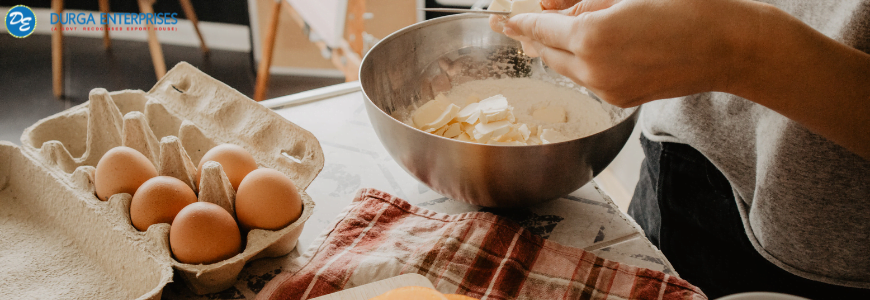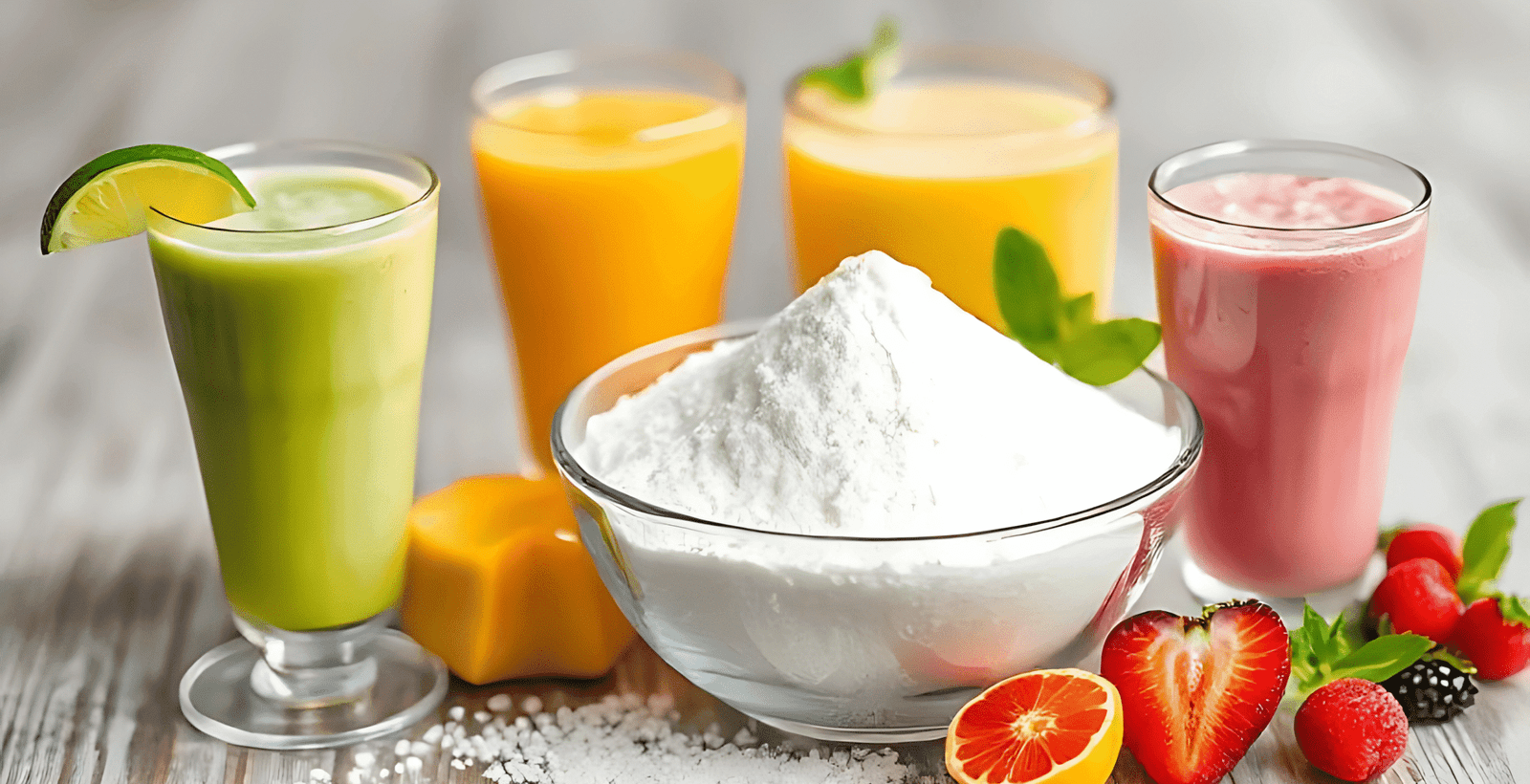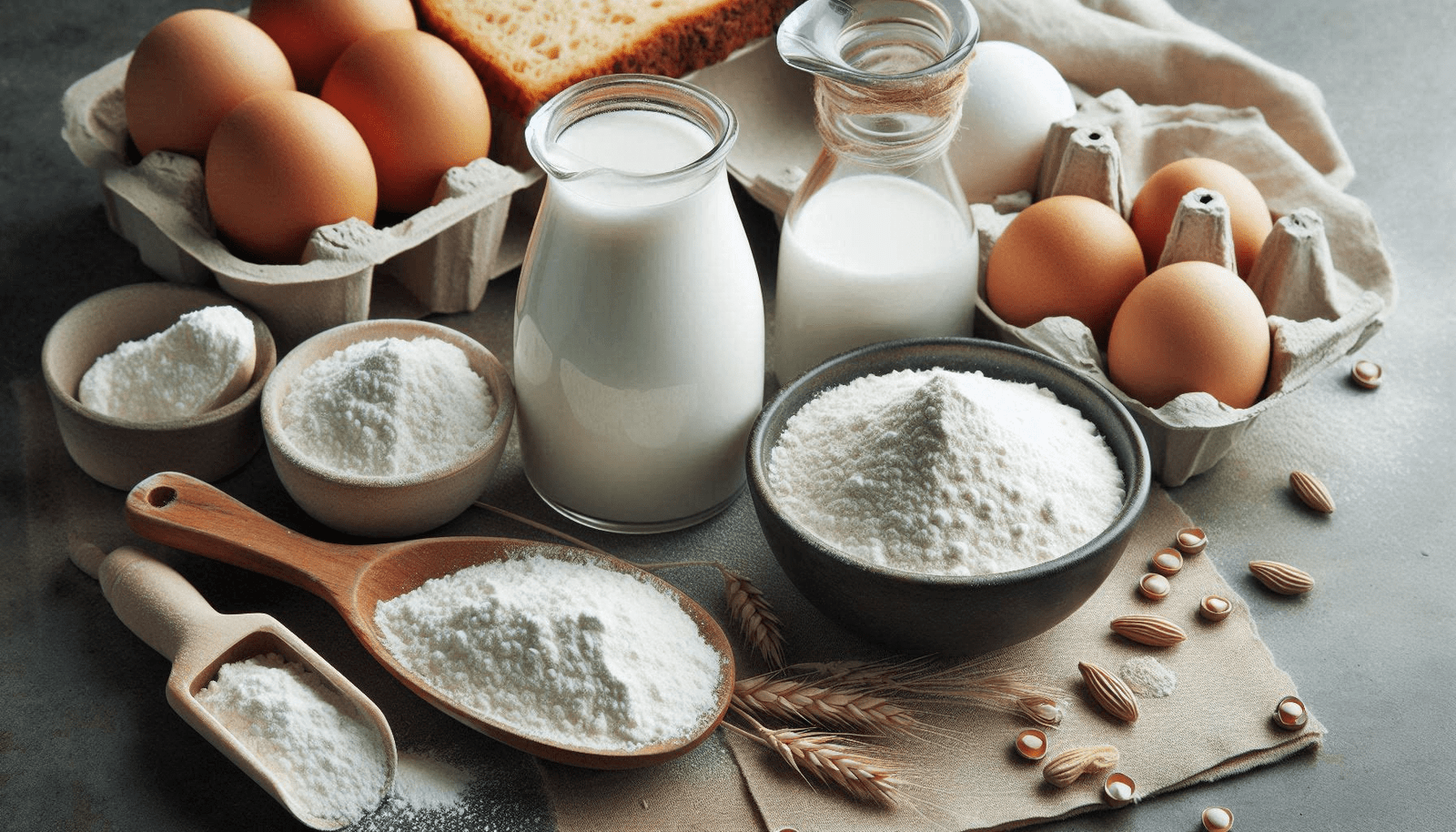In the world of baking, achieving the right texture, rise, and moisture can be a challenge—especially for large-scale commercial bakeries and health-conscious home bakers. One ingredient that’s gaining attention for its powerful functional properties is Guar Gum in Bakery products. This natural thickener and binder has quietly transformed the quality of breads, muffins, cakes, and gluten-free treats.
In this blog, we’ll break down how Guar Gum in Bakery applications can improve your baked goods. We’ll explain its role in achieving a fluffy rise, longer shelf life, and better moisture retention. Plus, we’ll touch on gluten-free benefits and clean label trends.
What is Guar Gum?
Guar gum, also known as E412, is a natural food additive derived from the guar bean (also called cluster bean). It is processed into a fine white powder that acts as a thickening, stabilizing, and emulsifying agent in various food products.
As a hydrocolloid, guar gum absorbs water and forms a gel-like consistency. This property makes it highly useful in food manufacturing, particularly for bakery applications where consistency and moisture are key.
Why Use Guar Gum in Baking?
Adding Guar Gum in Bakery formulations can bring many benefits:
1. Enhances dough elasticity
2. Helps trap air for better rise and volume
3. Retains moisture for softer textures
4. Acts as a binding agent in gluten-free recipes
5. Extends shelf life by preventing staleness
Whether you are making breads, cookies, pizza doughs, or cakes, Guar Gum in Bakery settings can solve common baking problems.
Why Use Guar Gum in Baking?
Adding Guar Gum in Bakery formulations can bring many benefits:
1. Enhances dough elasticity
2. Helps trap air for better rise and volume
3. Retains moisture for softer textures
4. Acts as a binding agent in gluten-free recipes
5. Extends shelf life by preventing staleness
Whether you are making breads, cookies, pizza doughs, or cakes, Guar Gum in Bakery settings can solve common baking problems.
How Guar Gum Improves Texture and Moisture?
One of the biggest advantages of Guar Gum in Bakery items is its ability to retain moisture. Nobody likes dry or crumbly baked goods. Guar gum acts like a sponge, holding water inside the dough or batter during baking. The result? A soft, tender crumb that stays fresh longer.
i. Moisture Retention:
Guar gum absorbs many times its weight in water. When added to the recipe, it creates a moisture-locking gel that prevents the loss of water during the baking process and even after storage.
This is particularly useful in:
A) Whole wheat breads (which tend to dry out quickly)
B) Muffins and cupcakes (for a moist center)
C) Gluten-free baking (where moisture is harder to trap)
ii. Better Rise:
Another important benefit of Guar Gum in Bakery products is how it helps improve rise and structure. It stabilizes air bubbles in the dough, allowing for a better rise in yeast-based and chemically leavened baked goods. Your loaves and cakes will appear taller and lighter without being overly dense.
iii. Improved Texture:
Guar Gum provides a smooth, uniform texture by preventing the separation of ingredients. This is particularly beneficial in batters where oil and water may otherwise separate. The result is a more consistent crumb and mouthfeel across all servings.
iv. Enhanced Shelf Life:
By locking in moisture and preventing staleness, Guar Gum extends the freshness of baked goods. This helps prevent spoilage and reduces product returns or wastage — especially helpful for commercial bakeries and exporters.
v. Better Dough Handling:
In industrial and home baking, Guar Gum improves dough elasticity and makes it easier to shape or roll. It reduces stickiness without drying out the dough, making it ideal for:
1. Cookie dough
2. Pie crusts
3. Gluten-free breads
Guar Gum in Gluten-Free Baking:
When it comes to gluten-free recipes, guar gum becomes a must-have. Since gluten is what usually gives dough its stretch and strength, removing it causes baked items to fall apart easily. This is where Guar Gum in Bakery settings—especially for gluten-free applications—shine.
Guar gum acts as a substitute for gluten by providing:
1. Elasticity to the dough
2. Binding power to hold ingredients together
3. Structure so that cookies and breads don’t crumble
4. Improved texture, making gluten-free items less gritty and more cohesive
Dosage: How Much Guar Gum To Use?
Using guar gum in your baking recipes is simple but must be done in small quantities. Too much can make the product gummy or rubbery.
Here are general usage guidelines:
| Product Type | Recommended Guar Gum Dosage |
|---|---|
| Bread | 0.25% to 0.5% of flour weight |
| Cakes & Muffins | 0.3% to 0.6% of flour weight |
| Cookies | 0.2% to 0.5% of flour weight |
| Gluten-Free Breads | 0.5% to 1% of total flour weight |
Always mix guar gum well with your dry ingredients before combining them with liquids to avoid clumping.
Clean Label and Natural Appeal:
As consumers demand more natural, non-GMO, and clean label ingredients, Guar Gum in Bakery applications meet the mark. Guar gum is plant-based, minimally processed, and widely accepted in clean label food production.
It’s:
1. Vegan-friendly
2. Keto-friendly
3. Kosher and Halal certified
4. Free from synthetic chemicals
Applications of Guar Gum in Different Baked Products:
Let’s look at how Guar Gum in Bakery products work across a range of baked goods:
1. Bread and Buns:
Guar gum in bread and buns enhances the softness and volume in breads. It helps retain gas bubbles formed during fermentation, giving a better crumb structure and a taller rise.
2. Cookies:
In cookies, guar gum adds chewiness and binds the dough together, especially in recipes without eggs or gluten.
3. Muffins and Cupcakes:
By locking in moisture, guar gum keeps muffins soft and fresh. It also reduces crumbling, especially in low-fat or egg-free versions.
4. Pizza Crust:
Guar gum improves the stretchability and workability of dough, helping you get that crispy outside and chewy inside crust.
5. Gluten-Free Cakes:
Since gluten is absent, guar gum acts as the glue that holds everything in place, resulting in soft, moist, and stable cakes.
Guar Gum vs. Other Binders in Baking:
| Feature | Guar Gum | Xanthan Gum | Psyllium Husk |
|---|---|---|---|
| Plant Based | Yes | Yes | Yes |
| Gluten-Free | Yes | Yes | Yes |
| Water Absorption | High | Medium | High |
| Clean Label Friendly | Yes | No (some debate) | Yes |
| Cost-Effective | Yes | Expensive | Yes |
Guar Gum in Bakery stands out as an affordable and efficient option with great results across many recipes.
Is Guar Gum Safe?
Yes, guar gum in bakery is generally recognized as safe (GRAS) by the U.S. FDA. It is widely used across the food industry and has a long track record of safe consumption. However, just like any additive, it should be used in the right quantity.
Stored and Handling of Guar Gum:
1. Store in a cool, dry place
2. Keep the bag or container sealed to prevent moisture absorption.
3. Shelf life is usually 2 years from the date of manufacture.
If you’re using guar gum for commercial baking, always source it from a trusted guar gum manufacturer or exporter to ensure purity and consistency.
Final Thoughts:
Using Guar Gum in Bakery products can drastically improve the quality, shelf life, and appeal of your baked goods. From soft breads to chewy cookies and moist muffins, this natural ingredient is a reliable choice for both commercial bakers and home cooks.
Its ability to enhance texture, trap moisture, and support gluten-free recipes makes it a versatile and valuable addition to any bakery formulation.
If you are in the food business, partnering with a reliable guar gum supplier can help you create bakery products that consumers love—naturally and consistently.

